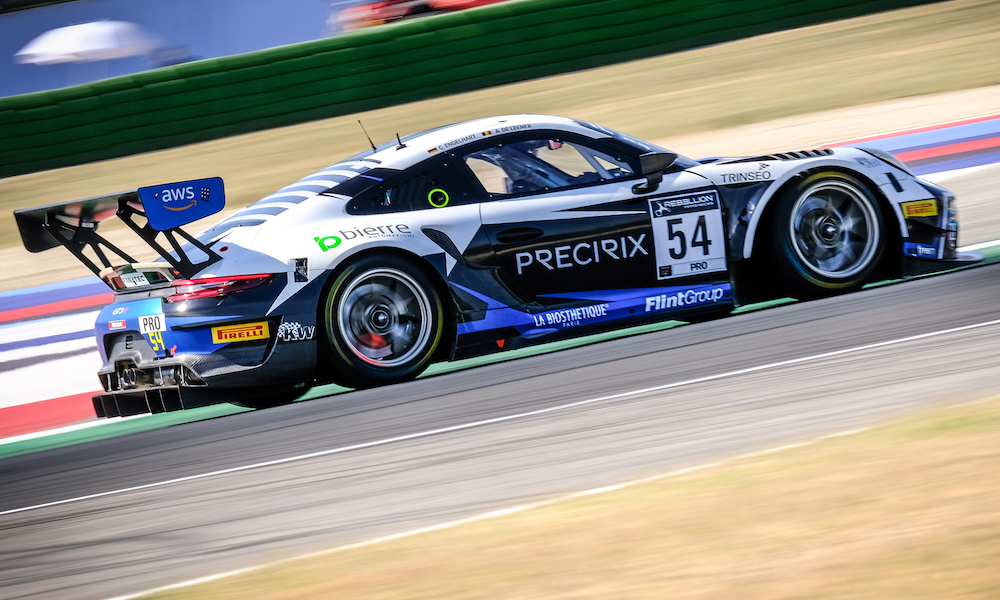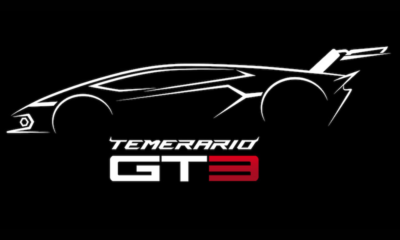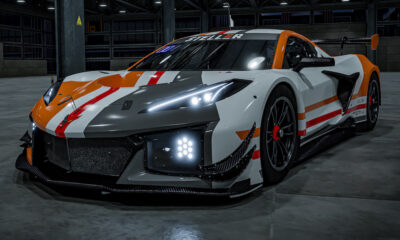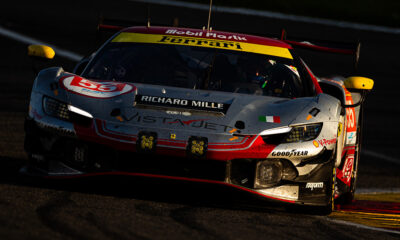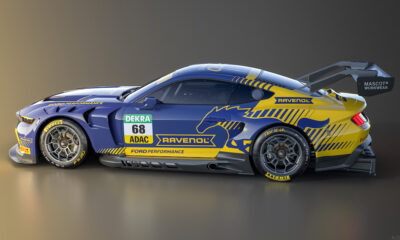Adrien de Leener says he is “looking forward to being back” in action at this weekend’s Fanatec GT World Challenge Europe powered by AWS Sprint Cup season finale after experiencing three months on the sidelines recovering from four fractured vertebrae.
De Leener sustained the back injury when his Dinamic Motorsport Porsche 911 GT3 R landed heavily after being vaulted by a curb on lap one of the first race at Misano in July.
The Belgian, who races with Christian Engelhart, ran over a strip of horizontally-aligned curbs at the exit of the Turn 6 left-hander and came down with a substantial impact.
The outcome caused Dinamic to miss round four of the Sprint Cup season at Brands Hatch. De Leener is set to turn his first laps since the accident during today’s paid test sessions at Valencia.
“It was definitely a tough incident,” de Leener told Sportscar365. “A safety device that creates that kind of incident is not what you want.
“I’m not one to be really involved in lots of incidents, so it came as quite a shock. At first I didn’t think it was so bad. But then when I got out, something wasn’t right. We went and did all the scans and it was actually four vertebrae.
“So it was more of an impact than I had imagined. It was about 33G vertically, so I was quite lucky that the car absorbed some of the pressure. But overall, the recovery has gone well.
“It was about six weeks of doing absolutely nothing, then I could start pool exercises.
“After the third scan, they showed that the fractures were more stable and solidifying, so I could start loading and running.
“It was unbelievable how the second half of the recovery went, after being immobilized.”
De Leener is relishing his return to the wheel after the three-month absence, which included missing the 24 Hours of Le Mans, and believes that a points result is achievable for Dinamic at the Sprint Cup finale.
Such a result would redeem an otherwise challenging season for the Pro-class Porsche team.
“I’m looking forward to being back,” de Leener said. “We had a rough start in Magny-Cours and were quite out of the window on pace. I qualified 23rd and Christian qualified 19th, so we were really distant from the front.
“We had two really strong races at Zandvoort. In the second race were a safe third, but with 10 minutes to go the power steering gave up. So we were looking forward to a good result in Misano, but obviously that didn’t happen.
“Having had that setback, it’s really nice to be back at least for this round and any other races on the side.”
Although he has not driven the Dinamic Motorsport Porsche since the Misano incident, de Leener is confident about how he’ll settle into the cockpit at Valencia this weekend.
“Behind the wheel is fine. It’s quite straightforward, to be honest,” he said.
“The biggest thing is muscular; repetitive impacts. We actually managed to go above what the car should give through physical training.
“It will be more about how tired I am at the end of the weekend, than if is there any pain.
“Obviously there’s some muscle mass and you get a bit weaker when you’re on the sideline, but after five to six weeks of pretty intense physio, I feel pretty confident that there’s not going to be any pain. It’s just maybe there will be some weakness after Sunday.
“In hindsight, it’s only been three months which is a bit like a winter break. The first few runs might just be about getting the bearings back. But all of us have driven enough that after two runs, you’ll be close to the target.”
De Leener Questions Curb Placement
The horizontal curb that caused the No. 54 Porsche to launch into the air at Misano was positioned on the right side of the track, to discourage drivers from breaching track limits and slowing those who do.
However, de Leener has questioned the risks posed by the placement of such a curb after his accident. He noted that in the second Misano race, some drivers ran out wider than the curbs to avoid them, and consequently returned to the track at a greater speed.
It’s understood that a meeting was held earlier this week between GTWC Europe series organizer SRO Motorsports Group and the FIA, in which the curbing topic was put forward with evidence from Dinamic.
“Even if it’s a 0.001 percent chance that it happens, I don’t think the chance should be there at all,” said de Leener.
“We’ve tried to increase safety by increasing run-offs, but as a driver you have to use the run-off more than is legally permitted to get the lap time.
“We’re all running so close that if you don’t do that, you fall behind.
“At the end, they’re giving space and then retracting it with things that are even more damaging than just running over some gravel or grass. Outside curbs are obviously more damaging due to the speed on exit.
“If you look at F1, the cars are jumping on the outside curbs and creating incidents that – even at low speeds – shouldn’t be prevalent. I think there’s a topic between theory and practice here that maybe the people designing it aren’t the ones on the track.
“Maybe there should be more communication between the drivers and the safety teams.”
Asked what his ideal solution to the curbing problem would be, de Leener responded: “I don’t know if I have the solution. It goes back and forth.
“You can decide to do what they did at Spa this year and be meticulous on track limits, and say that we’re having cameras on all these places and have a very strict regulation behind it.
“Or you bring back a scenario where drivers have to hold back a bit. If you look at Nürburgring where there is zero run-off, there are few drivers that are going to 100 percent because they know that it bites.
“Unfortunately with all these run-offs, there is no repercussion. There is a fine line between creating something that is safe theoretically and safe in practice.
“I’m not the one to make that final decision: I just know that what was done there is not the right answer.
“I know MotoGP went without them [at Misano]. So if they can run without them, why should we have them? That’s also a question to be asked.”


